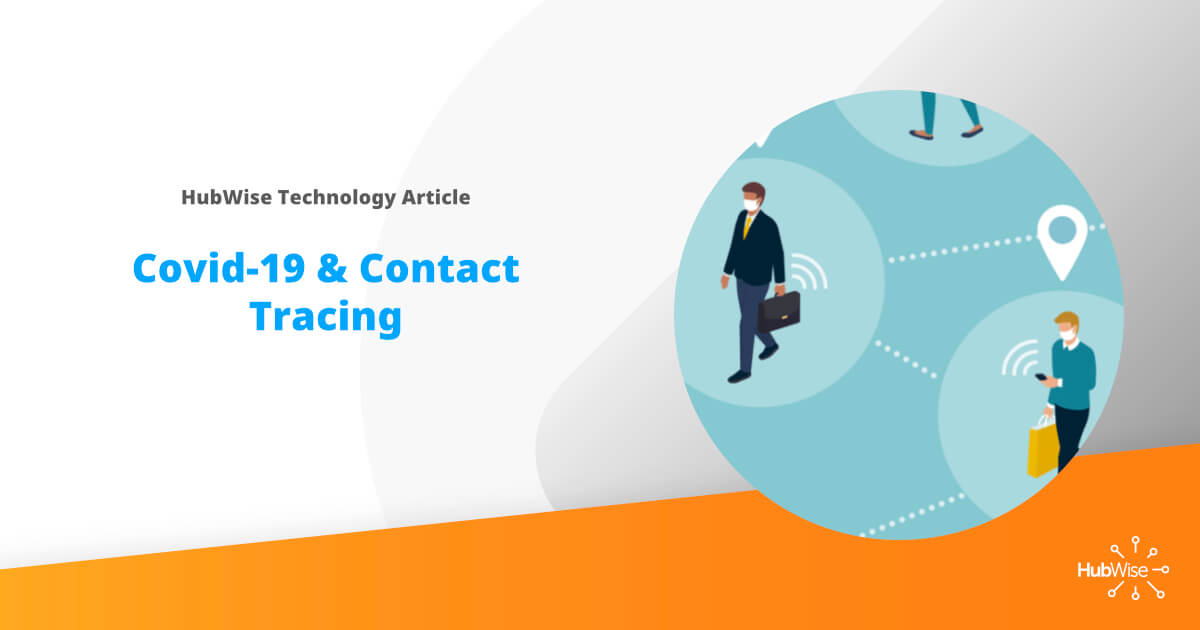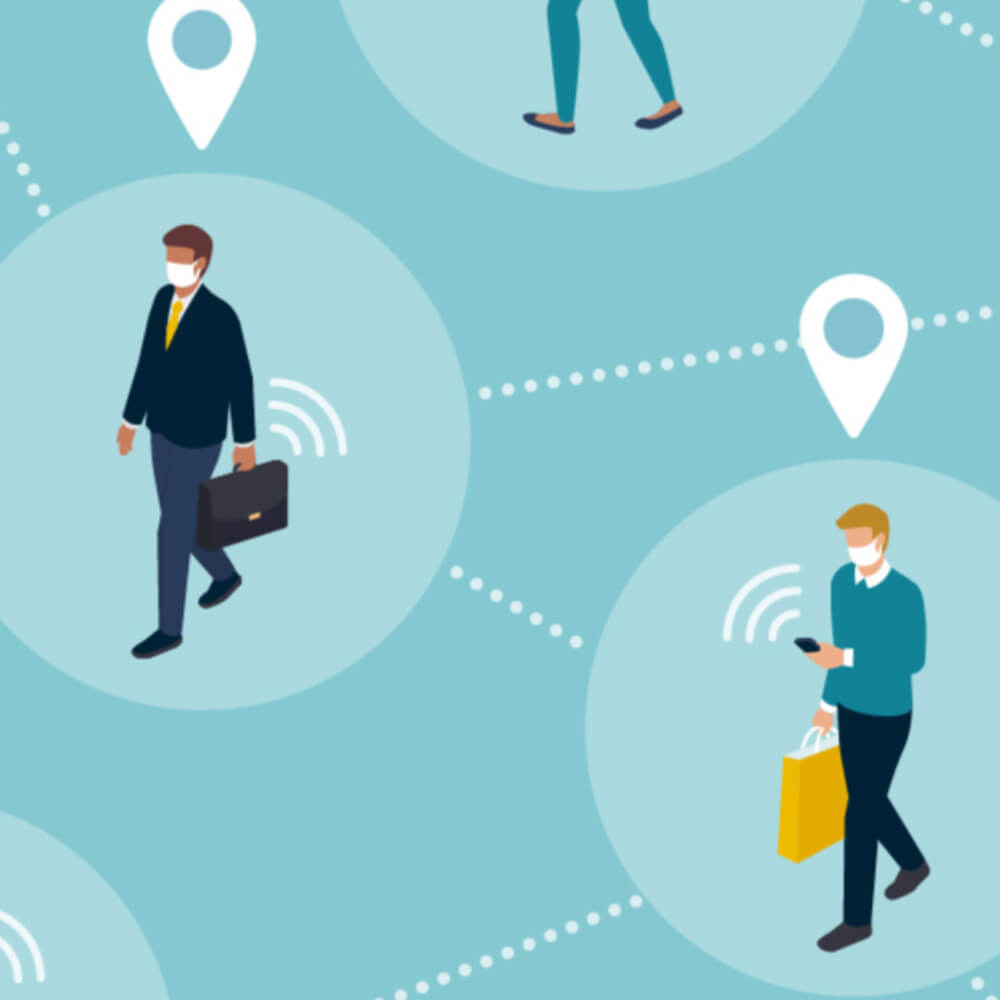COVID-19 & Contact Tracing
Contact tracing currently is being adapted on a large scale in an effort to reopen the United States and global economy.
Many questions remain to be answered by the combined public and private effort. How will it be put in place? What will be technology’s role? How will our privacy be affected by allowing our daily movements to be traced? How important is it to resolving our current pandemic?
Medical contact tracing is a technique that is used to identify infectious disease carriers and then uncover who they may have exposed. This is done using manual tracers, people who track all movements and contacts an infected person has had, and through the use of technology, like GPS and Bluetooth. Knowing who could possibly be infected allows for the possibility of isolating an outbreak and minimizing the spread. This can be easily accomplished in a remote or isolated geographic area. The use of contact tracing has been extremely effective with limiting the spread of Ebola and other local infectious diseases.
There are three aspects to controlling and eventually ending the current pandemic that has engulfed the United States. First, testing needs to be readily available to all that have come into contact with a potential positive. Next is to trace all of the interactions that the potentially positive patients have made. Lastly, individually isolate those that may be asymptomatic carriers until the disease has run its course, or at least 14 days. When all three aspects are put into place across the nation, the economy should be able to open safely without a major threat of a new dramatic spike in cases. The Centers for Disease Control and the World Health Organization agree emphatically that it will take this three part approach to safely reopen the country.

The largest hinderance to our ability to successfully trace this disease is the current lack of infrastructure in place to accomplish this task on such a large scale. There were only 2,200 professional contact tracers in the United States pre-pandemic; roughly 1000 are working in New York. In comparison, there was 9,000 tracers in Wuhan, China, a city of 11 million people, tracking the progression of the Corona virus. According to research done by John Hopkins Center for Health Security, it will take approximately 100,000 tracers to accurately track the spread at a cost of $3.6 Billion. Several geographically linked States are working together to hire medically trained personnel to conduct these traces, with the goal of California alone, to bring on 10,000 temporary workers.
To help trace potential exposures, current technology, Bluetooth and GPS, are being utilized within new applications to conduct traces. Tech giants, Google and Apple, are close to releasing new mobile apps to speed up the progression of tracing and increase the availability of. Between the two companies, they are responsible for 99% of the operating systems running on smart phones world wide. When completed these applications will have the ability to automatically trace where any smart phone owner has been, as long as access to this data has been allowed. This will simplify the job of tracing all infected. There are major privacy concerns with allowing private businesses and potentially Local, State and the Federal governments access to individuals movements. While allowing this type of surveillance to occur will be the best way to help the greater good, there are many vocal opponent’s who do not believe that this intrusion will be limited to contact tracing only. Apple and Google are trying to mitigate these concerns by keeping the data decentralized, which will minimize the risk of malicious or unlawful surveillance.
Technology based tracing will never replace manual tracing. Only 8 out of 10 Americans own smart phones which have the capability of running the applications that it takes to trace all potential contacts with Covid-19. People that are aged 65 or older are the most susceptible to the worst effects of this disease, and they make up almost half of the people in the United States that are not smart phone users. Cities with large populations of homeless will also struggle using a mostly technological based tracing method. There will always be those that believe that their right to privacy is more important then their ability to be traced and will refuse to download any application that allows for this type of surveillance. The use of manual tracing and the utilization of technology in conjunction will allow for the most accurate tracking of the disease, which will lead to our ability to reopen the country safely and allow normal life to resume.
Taiwan has been extremely effective at mitigating the spread of Covid-19. Much has been written about their use of technology and helping stop the spread, but they have relied equally on manual tracing methods. With a population of almost 23 million, they have had only 428 positive tests for Corona, with only 6 deaths. In comparison, the state of New York has a population of less than 20 million, and have seen over 300,000 positive cases with 23,000 deaths. Taiwan has implemented all 3 preventative measures to keep their numbers so low. They have tested everyone with potential contacts, traced all contacts made and then quarantined anyone that could test positive for 14 days. Most importantly, they started taking these measures immediately after the spread started, unlike other locales who waited to enact preventative measures and did not strictly enforce them. Contact tracing is one of the three measures that must be put into place to allow the United States to fully open safely again. Without testing en masse, contact tracing and then isolating all that could have been infected the likelihood of another wave of cases stays incredibly high.
If you would like to find out how HubWise uses the latest technologies to manage our customers IT infrastructure, please reach out to us at jmoen@hubwisetech.com or call at (402)339-7441

